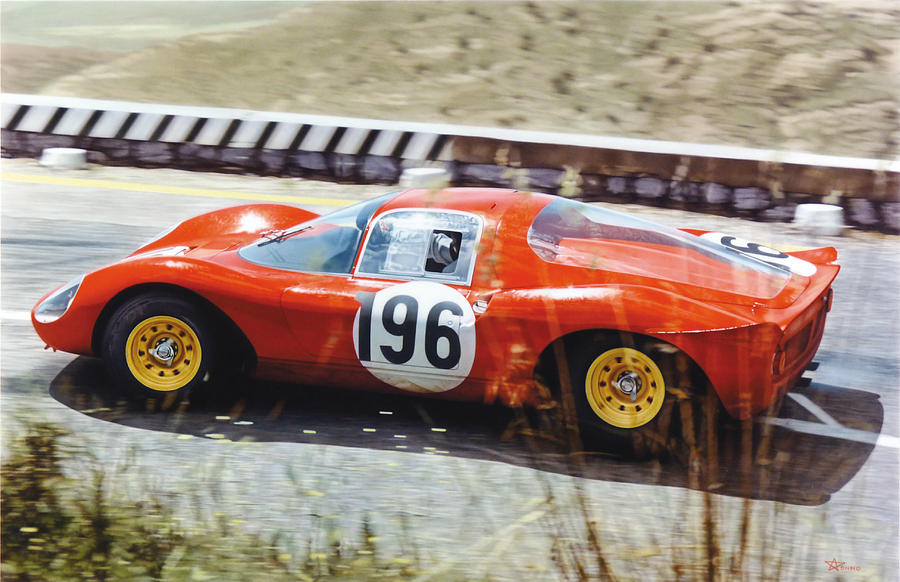jim c
This is a better photo, the stripes on the pic you posted on AMS makes it hard to see the shape.
See what comes back on AMS ,lots of talent on that site.
I don't know how much info to give you as you seem to be doing well and have good skills.
For me, looking at the panel it looks like it is in 2 sections and not welded yet, it needs to be welded.
Your inner line at the blister I would cut it and take the centre out of the panel.
If the line down the side of that blister is straight I would use a long tube say 300mm long because it will help get a true line, If not a dolly with the correct radius.
You need a profile pattern or patterns as a guide.
turn the sheet over , use a wooden slapper and work the edge of the sheet to form the rise up the sides of the blister.
Around the corners you would use a dolly and work it with the slapper or a radiused slapper, as it rises the radius is going to increase and to maintain the panel shape you will most likely have to stretch the outer edge , you can do this with a dolly and a metal planishing hammer, don't belt the shit out of it as it will make to much mess, gentle overlapping blows on the outer half of the flange, if you over stretch the whole panel will start to curve down from left to right.
You can do the same on the sides ,I can see a radius front to rear when you form the side rad for the blister it may take the radius out of the main panel, as you don't have a stretcher you can use the dolly and hammer and stretch it as well, take a few passes till you are happy and your pattern fits again.
You have to get this looking right ,it maybe to big to put in the wheel or the air hammer to clean up ,you may have to use hand tools to get it into shape.
Clean the inner edge, you will have to put the tail on the blister and clean it up.
You then push the blister up from underneath and scribe it of ,cut close , recheck , cut close recheck, get it to fit then weld.
Do not weld in the bottom radius you wont get it clean , weld on the outside rad up the sides.
The radius you have formed is going to stop the panel distorting when you weld.
If you don't have a body a file buy one,(for aluminium, finest tooth you can).
Look on the AMS for clean up if you are not sure.
I weld the outside ,fuse the inside, clean the inside off , no lumps, Knock the welds up so they are easier to clean, clean the outside, knock the weld down after clean and tidy the panel up.
You will end up making slappers and hammers ,dollies to suit areas its just the way it is.
Buy a flipper they are good on clean up.
You could do the whole job in the plenishing hammer upside down if you have someone who works in unison with you, hard to find as they just don't seem to get it.
If you apply downward pressure on the sheet it will form the radius onto the lower anvil.
Play with some scrap.
You could do the blister in one piece ,look up shrinking forks or shrinking in a stump.
You cut a pattern and do some shrinking around the front end it would come up easy in the wheel.
The rear may need a little shrink but not much
You could even use a sand bag and a mallet.
Hope its clear enough
Hope its not to much info.

































